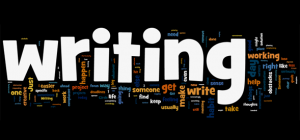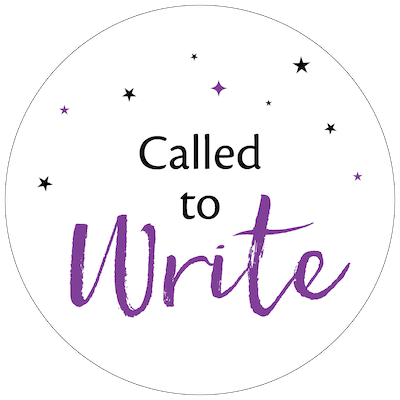Apparently I think in sevens a lot, at least when it comes to writing about writing.
As I was reviewing the most-read posts of 2014, apparently sevens were appealing to you, too.
These “7’s” posts were among the most popular last year, counting down to your favorite (and there’s no surprise to me there about why that one was the favorite — it’s something we all deal with!)
So, in reverse order, our lucky sevens:
7 steps to recovering from creative burnout
 When you get burned out, it’s hard to do anything, let alone be creative. In this article, I outline seven steps you can take to go from creative burnout to creative recovery, so you can bring back the joy you feel when you create. This is an important skill to master because sometimes — even when we’re doing our very best to keep the creative well filled and do our writing at a sustainable pace — resistance, deadlines, life, and fate conspire to the point where we’re scrambling to finish a project under a big time crunch, binge-write, and exhaust ourselves as a result (sometimes doing so for days, weeks, even months on end). And once we’ve hit that bottom of the creative barrel, writing anything sounds entirely miserable. Read this article to find out how to bring yourself back into creative balance.
When you get burned out, it’s hard to do anything, let alone be creative. In this article, I outline seven steps you can take to go from creative burnout to creative recovery, so you can bring back the joy you feel when you create. This is an important skill to master because sometimes — even when we’re doing our very best to keep the creative well filled and do our writing at a sustainable pace — resistance, deadlines, life, and fate conspire to the point where we’re scrambling to finish a project under a big time crunch, binge-write, and exhaust ourselves as a result (sometimes doing so for days, weeks, even months on end). And once we’ve hit that bottom of the creative barrel, writing anything sounds entirely miserable. Read this article to find out how to bring yourself back into creative balance.
7 ways to recommit to your writing
 Sometimes as writers we get into a good writing practice but still manage to become complacent about actually FINISHING projects and moving on to the next one, rather just making small amounts of progress or endlessly rewriting and editing. When that happens, it’s time to recommit, and raise the bar of our own expectations. In this article, I discuss seven ways to stop phoning it in and require more of yourself as a writer. Read this article to find out how to to recommit to your own writing.
Sometimes as writers we get into a good writing practice but still manage to become complacent about actually FINISHING projects and moving on to the next one, rather just making small amounts of progress or endlessly rewriting and editing. When that happens, it’s time to recommit, and raise the bar of our own expectations. In this article, I discuss seven ways to stop phoning it in and require more of yourself as a writer. Read this article to find out how to to recommit to your own writing.
7 ways to overcome fear and uncertainty about writing
 In this terrific guest post, Writer’s Circle coach and produced screenwriter Sarah Newman talks about how to stay in action and keep moving forward with our writing even when fear and uncertainty rear their ugly heads. She shares a list of seven great ways to get unstuck and keep writing that I’m sure you will find both handy and inspiring. Read her article and discover how to get into action with your writing.
In this terrific guest post, Writer’s Circle coach and produced screenwriter Sarah Newman talks about how to stay in action and keep moving forward with our writing even when fear and uncertainty rear their ugly heads. She shares a list of seven great ways to get unstuck and keep writing that I’m sure you will find both handy and inspiring. Read her article and discover how to get into action with your writing.
My 7 part series, “Make 2015 your year to write”
 Our most recent “7’s” post was my seven-part series, called “Make 2015 Your Year to Write”. If you missed it, it’s not too late to work with the writing prompts in the series that will help you design and create goals and resolutions for your writing year (2015 or otherwise!) so that they are well-aligned with what you want in the big picture. That way you can make sure you’re working grounded in the reality of where you are right now as a writer and where you want to end up.
Our most recent “7’s” post was my seven-part series, called “Make 2015 Your Year to Write”. If you missed it, it’s not too late to work with the writing prompts in the series that will help you design and create goals and resolutions for your writing year (2015 or otherwise!) so that they are well-aligned with what you want in the big picture. That way you can make sure you’re working grounded in the reality of where you are right now as a writer and where you want to end up.
- Part 1: Reflect on your writing life so far
- Part 2: Notice your writing patterns and challenges
- Part 3: Tap into what you want for your writing life
- Part 4: Examine the gap between where you are now and where you want to go
- Part 5: Tune into your vision for your writing career
- Part 6: Set goals for your writing year
- Part 7: Make your writing happen
7 tips for staying motivated by self-created deadlines
 This article ties in neatly with the article on recommitting, because self-created deadlines can be a powerfully motivating when it comes to hunkering down and doing the work. In this piece I talk about seven strategies you can use to make your inner deadlines actually mean something. Hint: It often involves turning those “inner” deadlines into outer ones. Read more about mastering your self-created deadlines here. (And see if you can guess which one is my favorite!)
This article ties in neatly with the article on recommitting, because self-created deadlines can be a powerfully motivating when it comes to hunkering down and doing the work. In this piece I talk about seven strategies you can use to make your inner deadlines actually mean something. Hint: It often involves turning those “inner” deadlines into outer ones. Read more about mastering your self-created deadlines here. (And see if you can guess which one is my favorite!)
And your favorite “7” post: 7 ways to beat procrastination
 This article was your favorite “7” post, and it’s one of mine too. And it’s no surprise. Procrastination is one of the biggest things we struggle with as writers. In the piece I talk about the most common reasons for procrastination and seven ways to beat it, including some things you may not have thought of, like setting super small micro goals, telling others about what you’re doing to create accountability for yourself, and knowing when to STOP writing. Check it out here and bust your own procrastination habit while you’re at it.
This article was your favorite “7” post, and it’s one of mine too. And it’s no surprise. Procrastination is one of the biggest things we struggle with as writers. In the piece I talk about the most common reasons for procrastination and seven ways to beat it, including some things you may not have thought of, like setting super small micro goals, telling others about what you’re doing to create accountability for yourself, and knowing when to STOP writing. Check it out here and bust your own procrastination habit while you’re at it.
Enjoy, writers!
I hope your 2015 is off to a great start.
Happy writing.



 Note from Jenna: This guest post is from one of our excellent Writer’s Circle coaches and screenwriter, Sarah Newman. I’ve been thrilled to have Sarah as a coach over the last year and a half, and her group participants absolutely adore her (as do I). She brings a compassionate, listening spirit to her coaching and she is an excellent role model with her strong writing work ethic. In her own writing, Sarah primarily works on TV pilots and features.
Note from Jenna: This guest post is from one of our excellent Writer’s Circle coaches and screenwriter, Sarah Newman. I’ve been thrilled to have Sarah as a coach over the last year and a half, and her group participants absolutely adore her (as do I). She brings a compassionate, listening spirit to her coaching and she is an excellent role model with her strong writing work ethic. In her own writing, Sarah primarily works on TV pilots and features.
